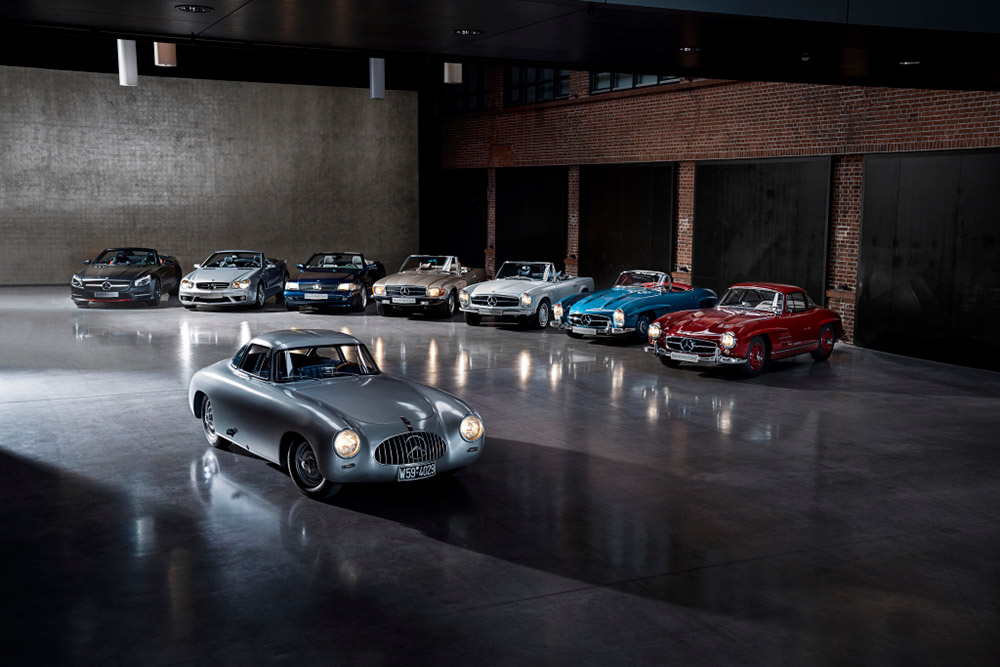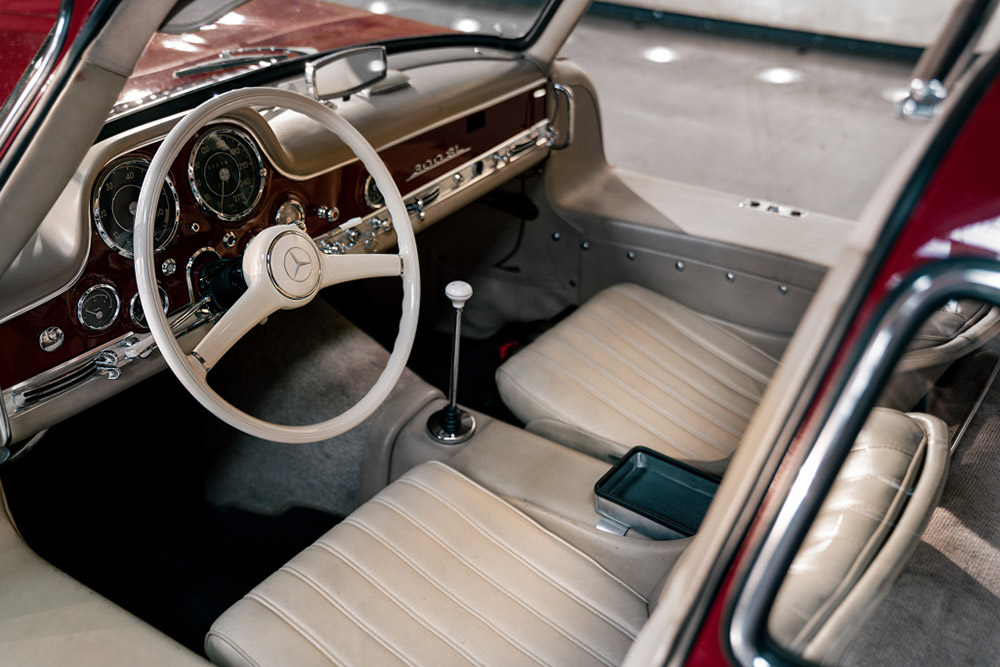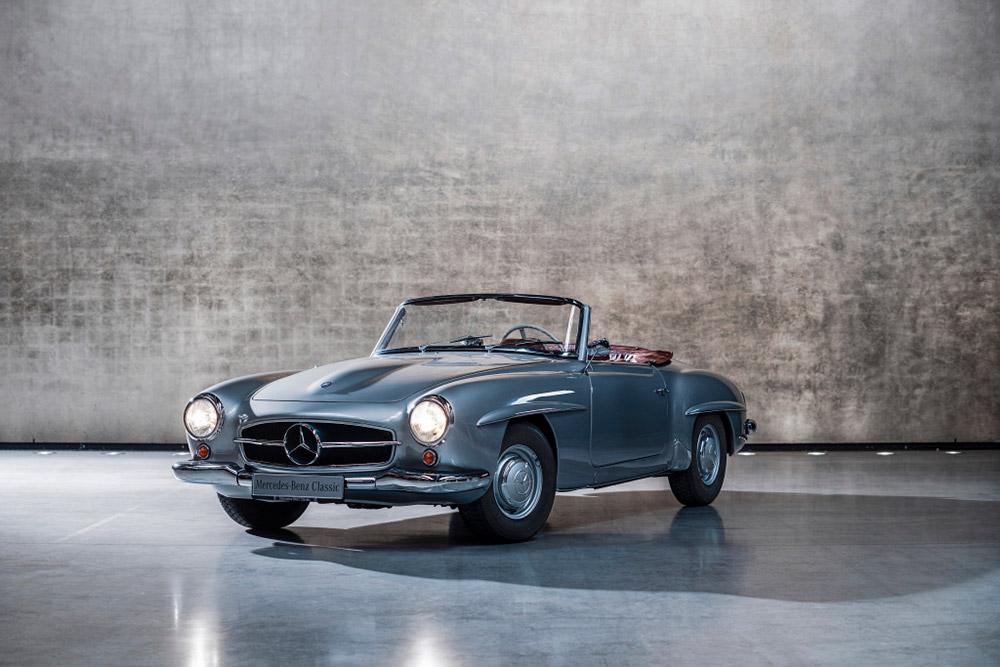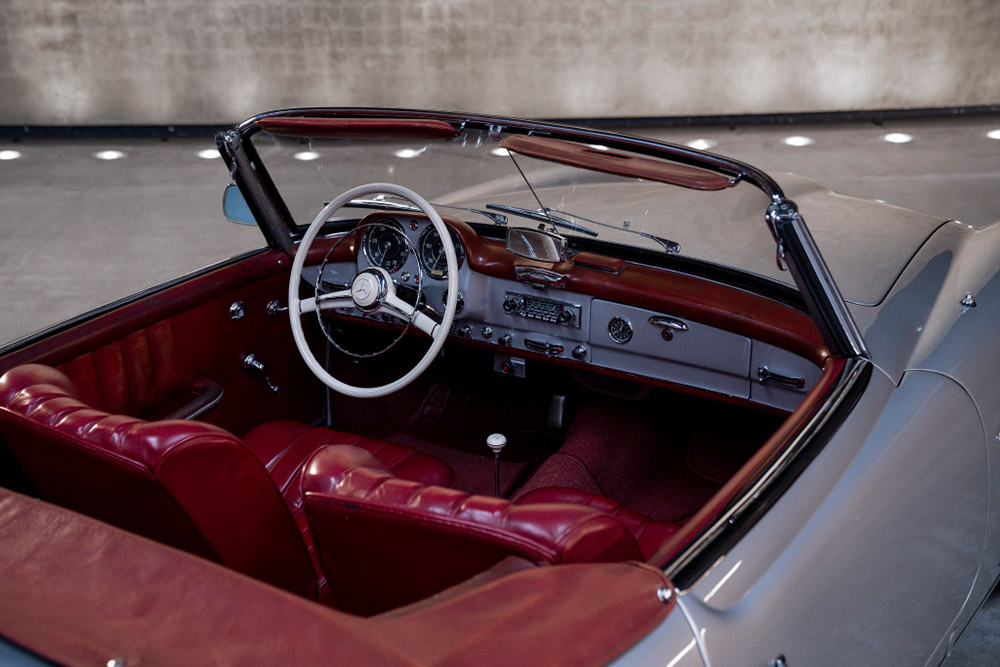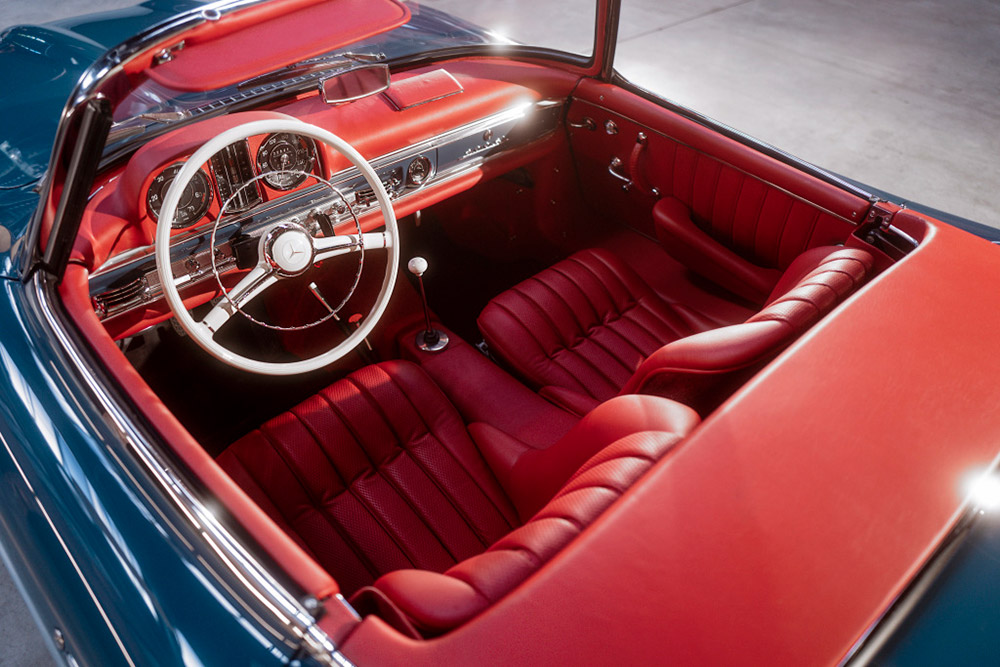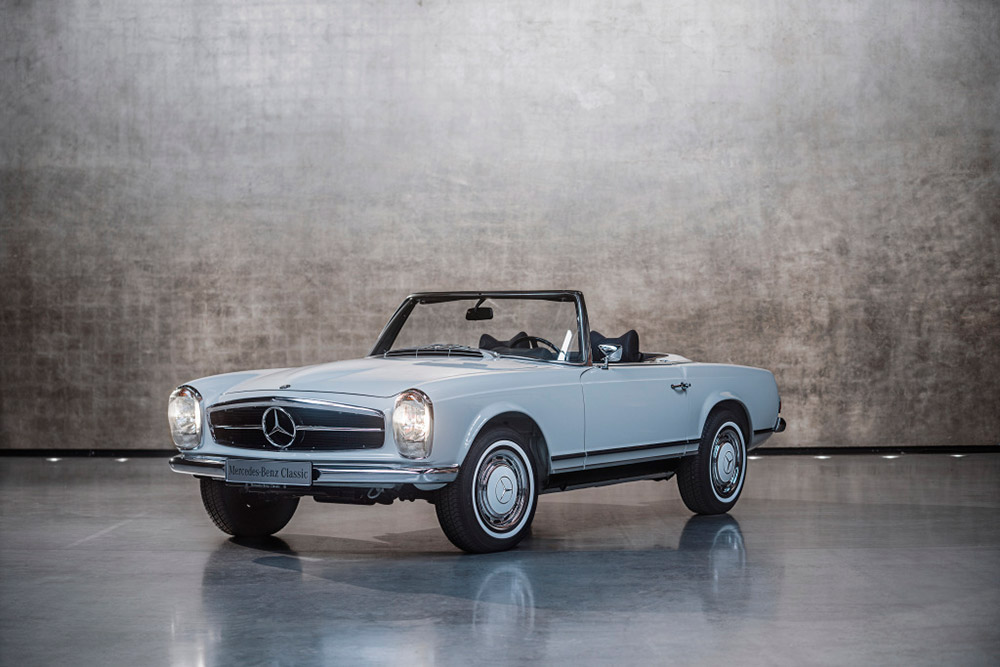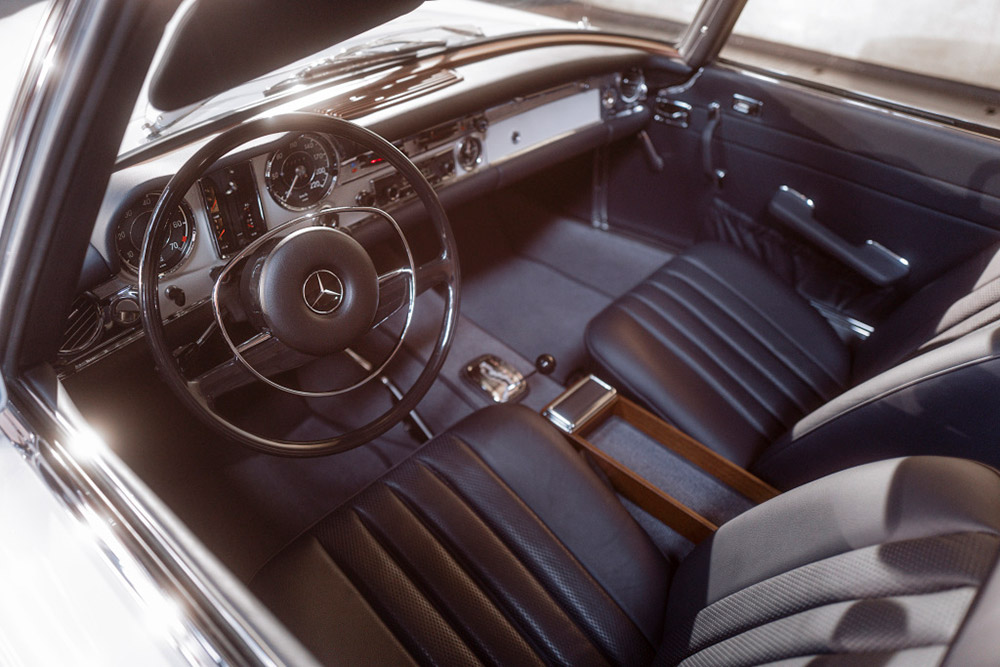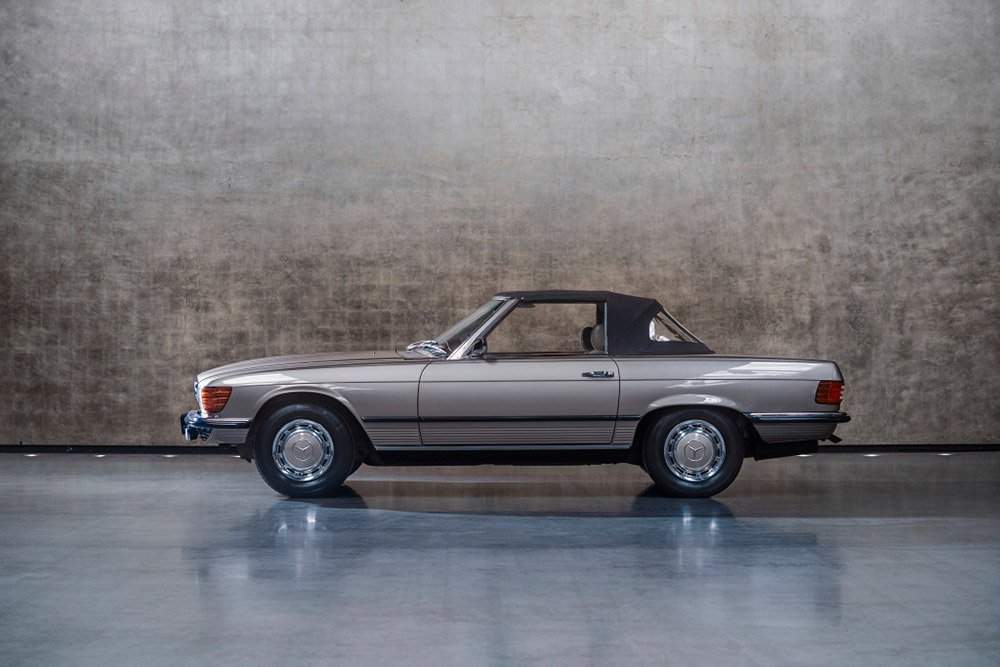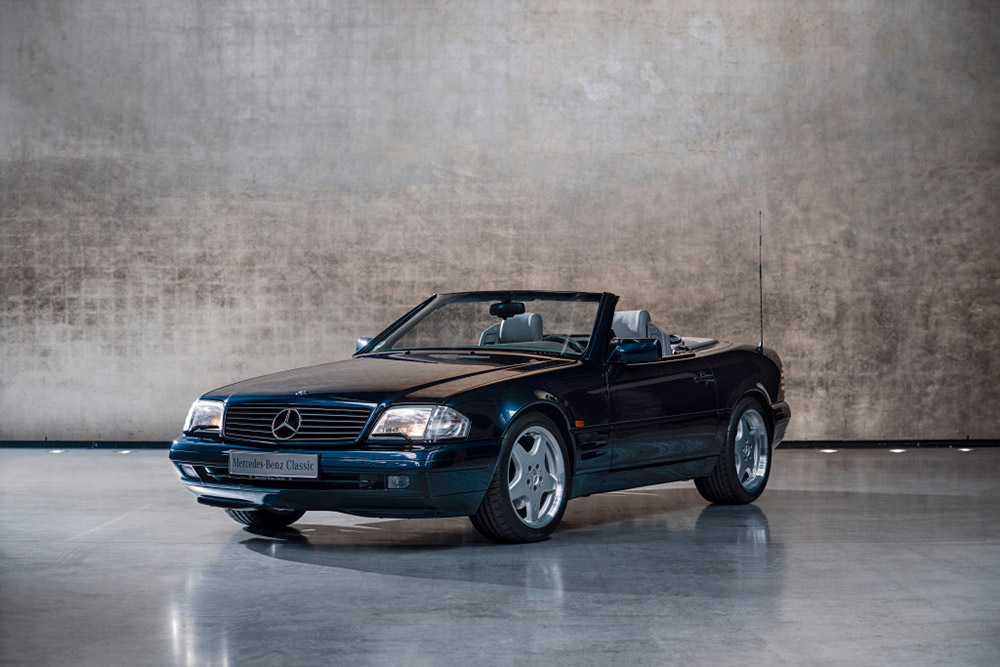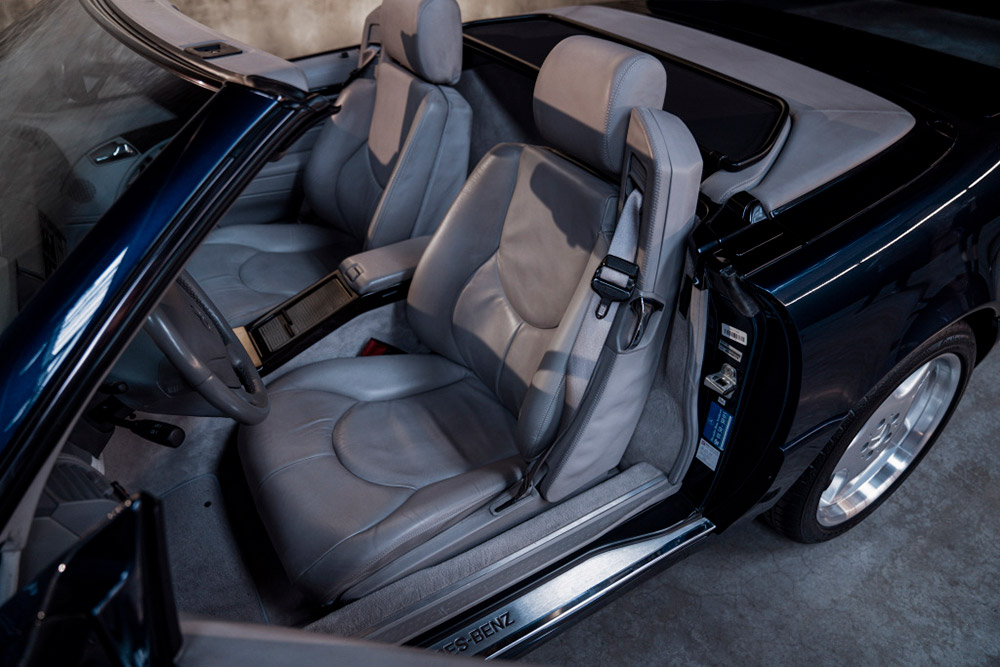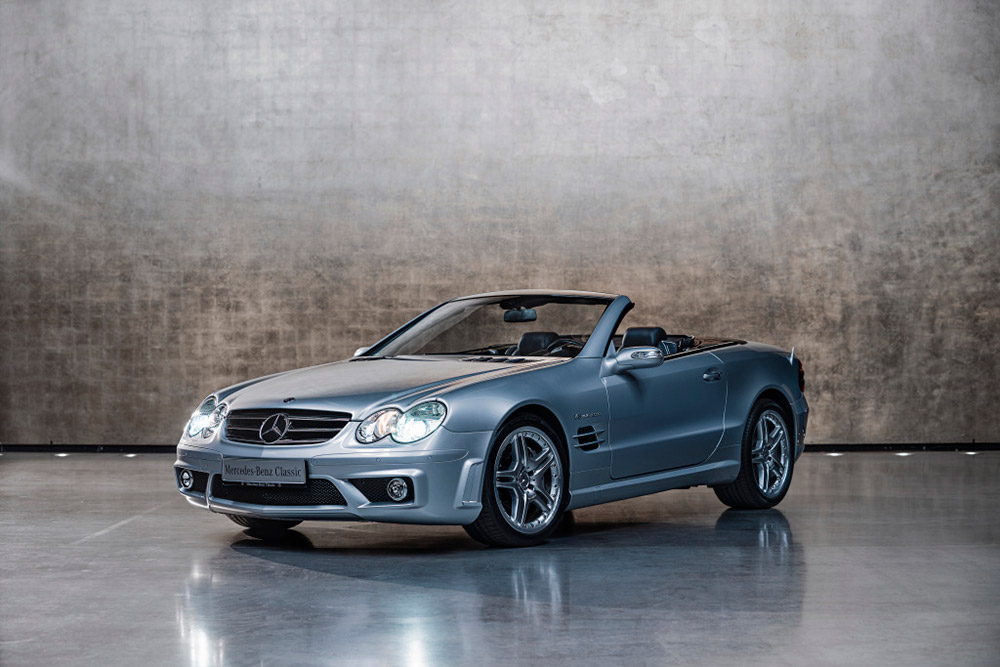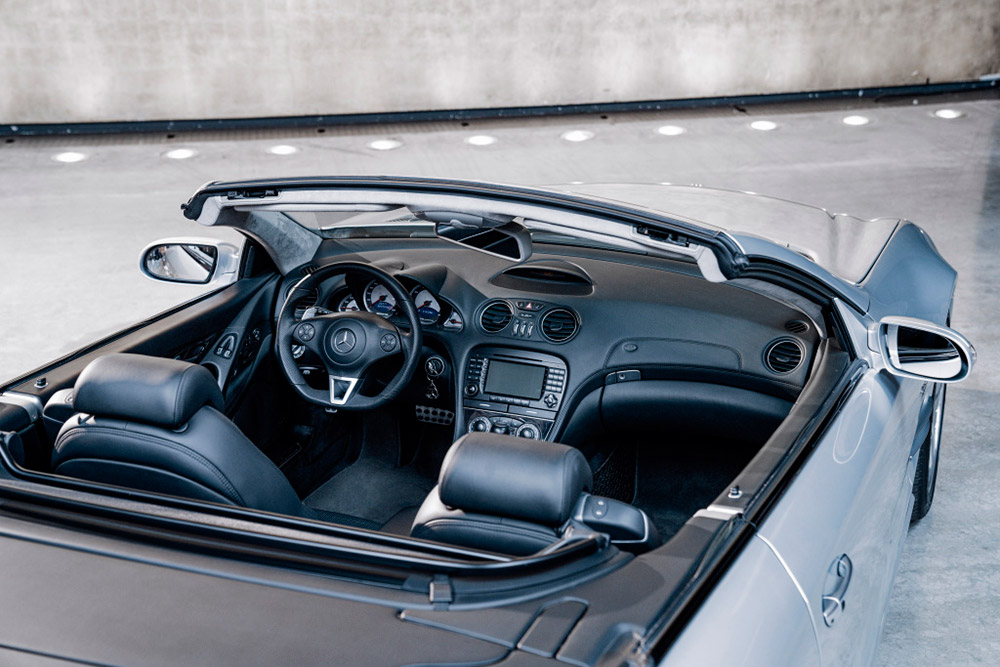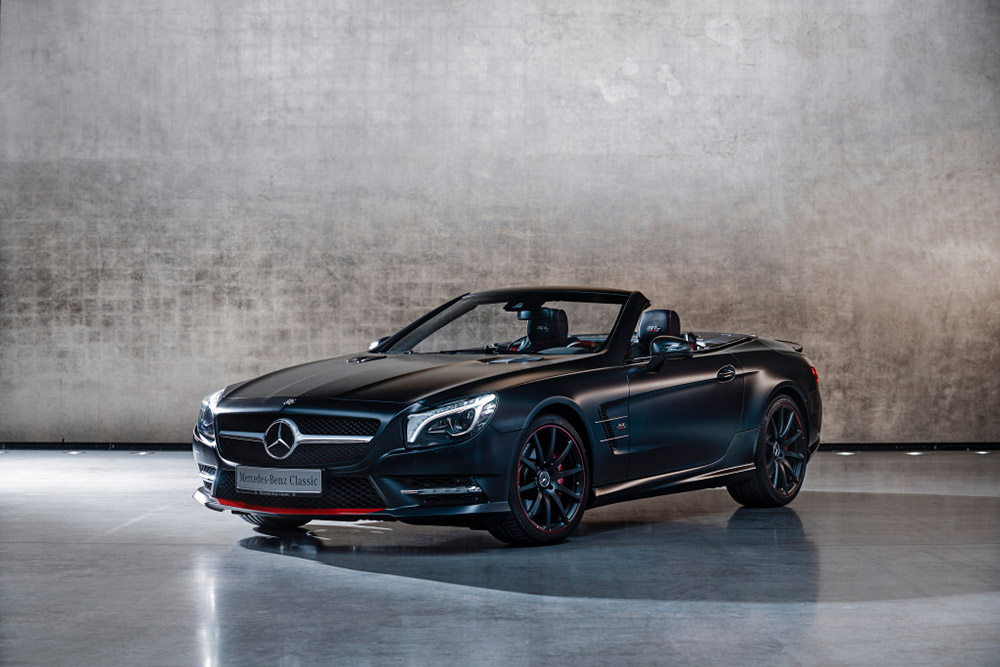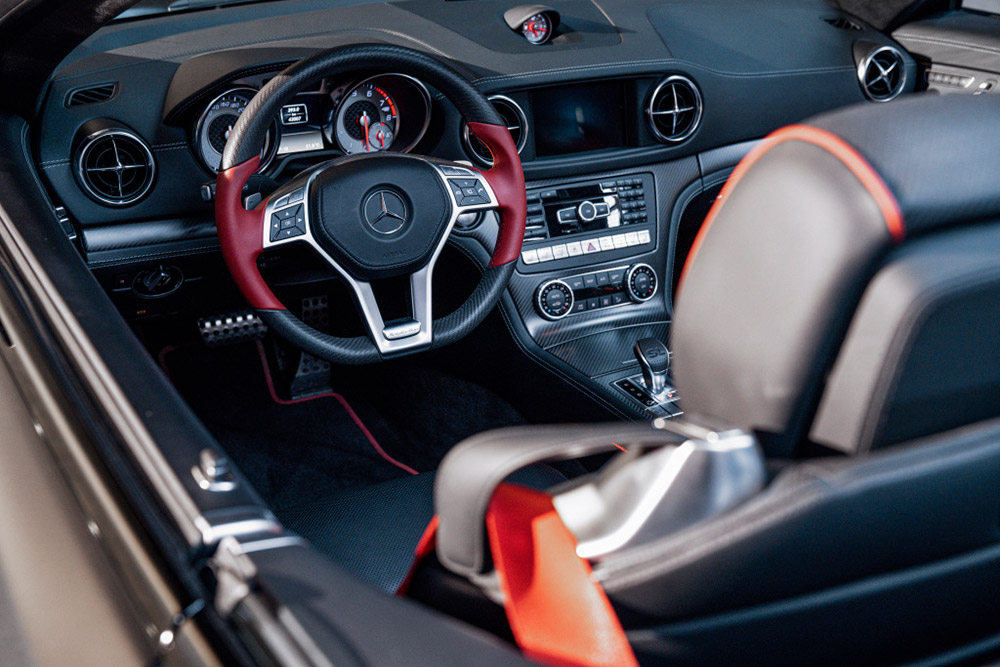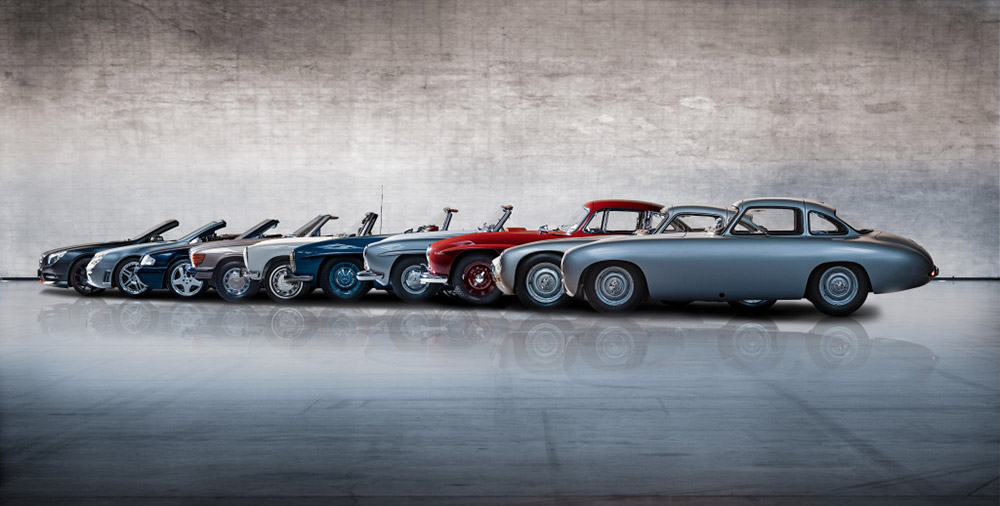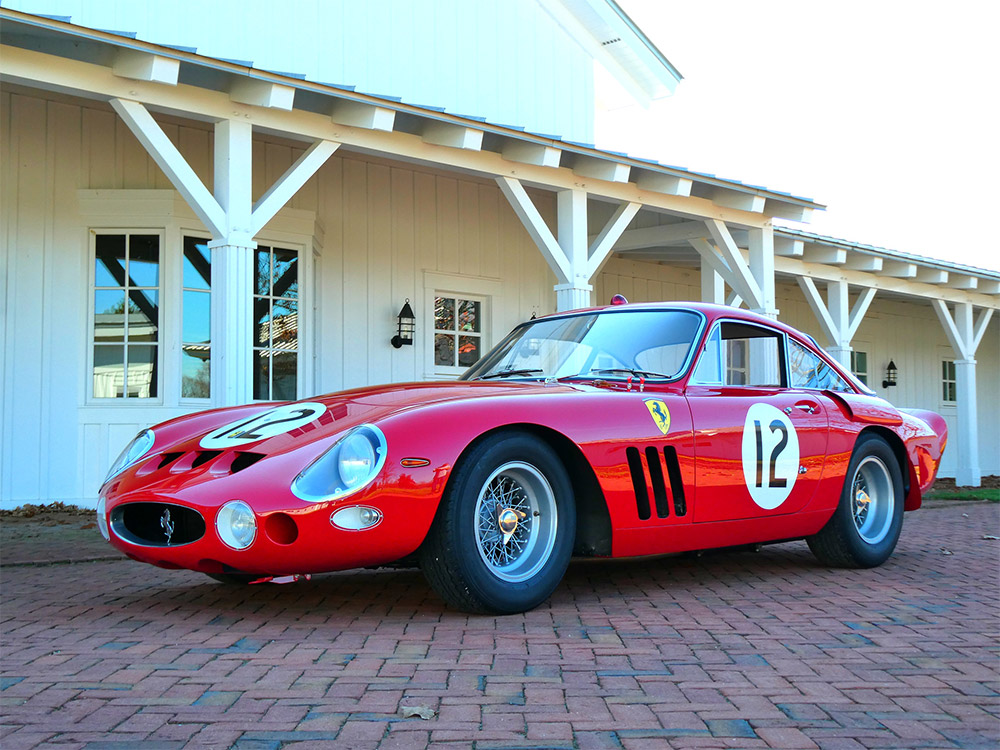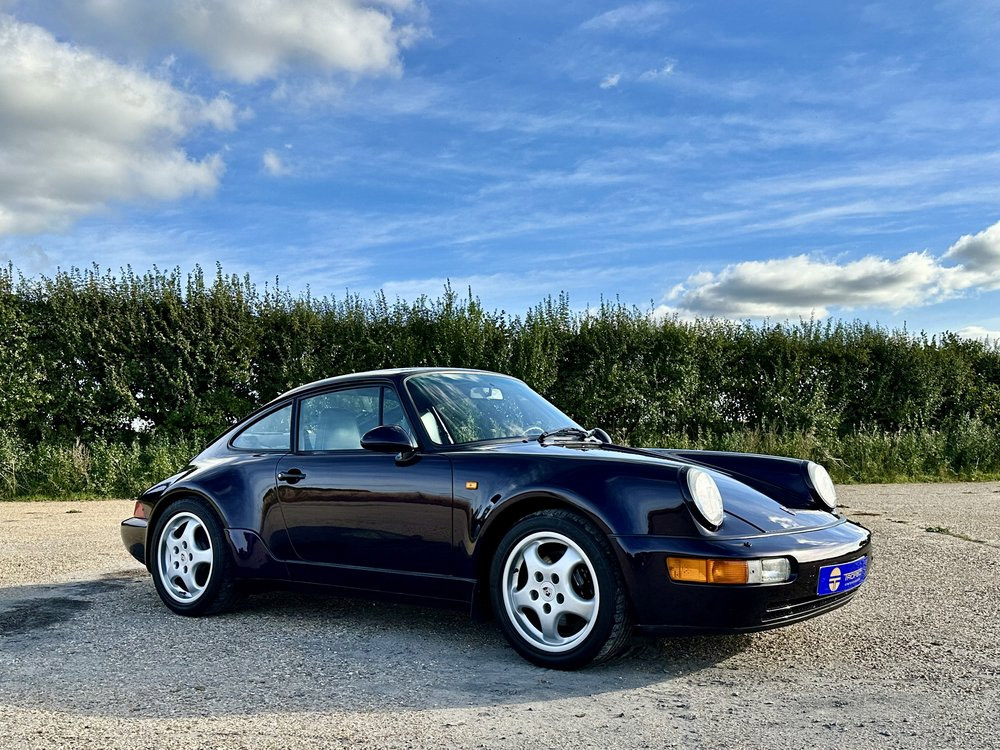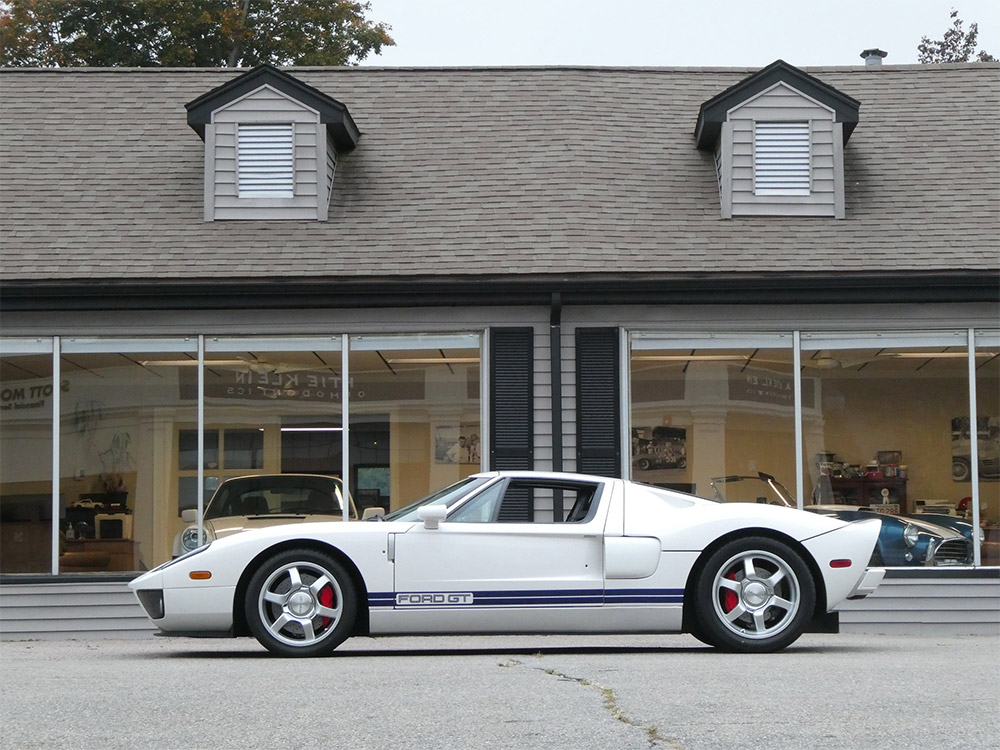A stretch of motorway near Stuttgart became the stage for the presentation of the Mercedes-Benz 300 SL (W 194) on 12 March 1952. Two days before that, the Stuttgart brand’s press office had caused a sensation when it issued invitations to selected journalists. It was not simply a question of the “new Mercedes-Benz 300 SL (super-light) sports car […] undertaking test drives in public for the first time”. This was simultaneously a clear statement that the brand was returning to motorsport with this car, as the press release noted: three 300 SLs had already been registered for “that famous Italian road race, the ‘Mille Miglia’, to be held on 3 and 4 May 1952”.
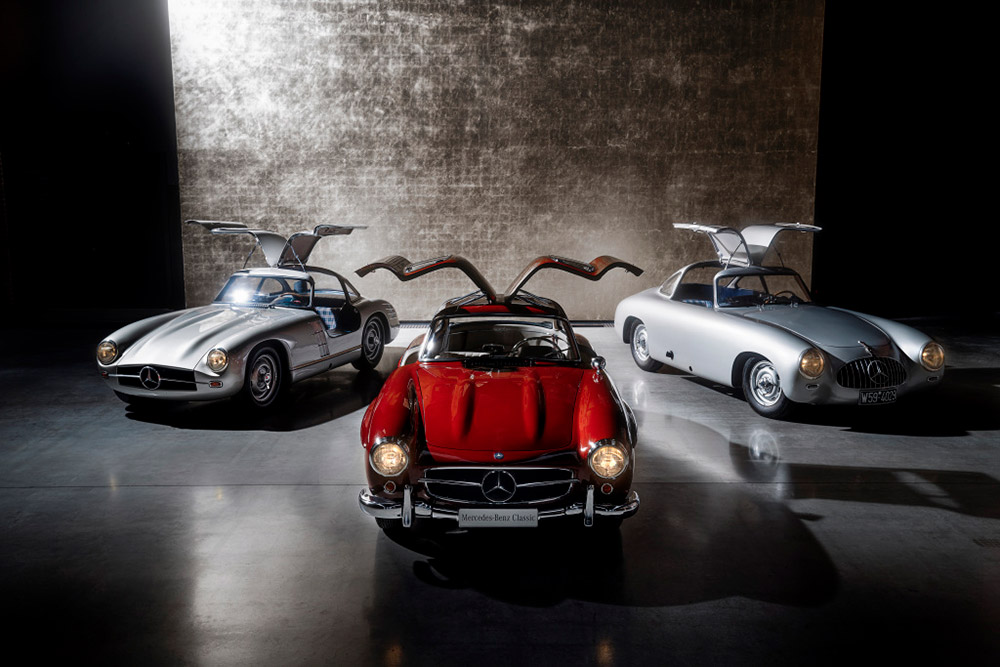
The press photo sent out with the invitation showed a dynamically drawn sports car depicting the archetypal SL lines. Its gullwing doors ended at the waistline of the body. Later, Mercedes-Benz enlarged the cut-outs downwards, making it easier to get in. What was completely new was the structure hidden under the body and made of thin aluminium-magnesium sheet: this was the roll cage, developed by Rudolf Uhlenhaut especially for this racing sports car and weighing 50 kilograms, made of thin tubing that was subjected only to compression and tension. It was this frame design that made it technically necessary to hinge the gullwing doors to the roof. The M 194 engine was derived from the M 186 production engine used in the Mercedes-Benz 300 (W 186) representation car presented in 1951. For use in the racing sports car, the engineers increased its output to around 125 kW (170 hp). By tilting the engine through 50 degrees to the left and employing dry sump lubrication, it was possible to lower the installation position. Other technical components in the 300 SL were also derived from the Mercedes-Benz 300, the legendary “Adenauer” saloon, and the sporty-luxurious 300 S touring car (W 188).
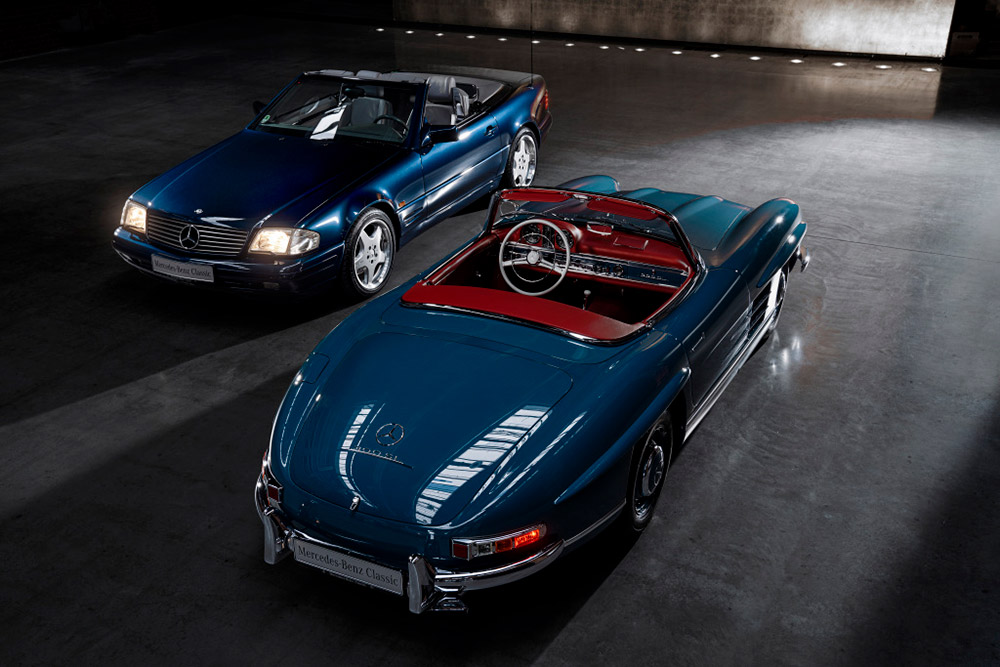
The 300 SL was the car of the season. In the 1952 Mille Miglia, Mercedes-Benz took second and fourth places with the 300 SL in the very first race. The racing sports car also took a triple victory in the sports car race in Bern, a one-two victory in the 24 hours of Le Mans and a quadruple victory in the sports car race on the Nürburgring. The last race of the 300 SL – which now had an output of 132 kW (180 hp) – was the third Carrera Panamericana 1952 in Mexico. Karl Kling/Hans Klenk and Hermann Lang/Erwin Grupp achieved a legendary one-two victory.
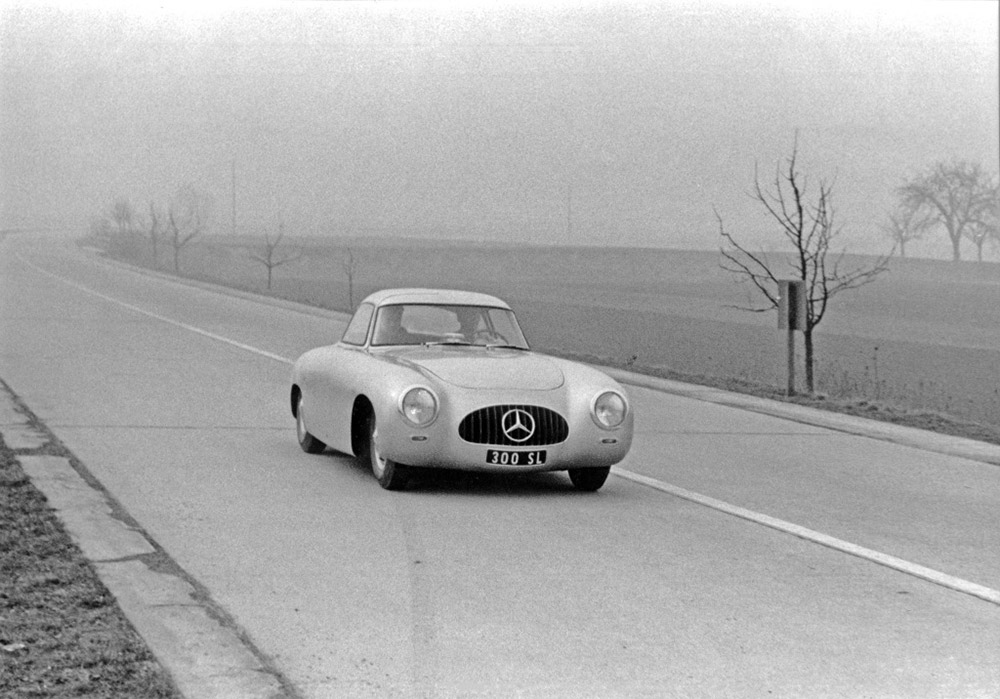
For 1953, a successor model to the highly successful 300 SL racing sports car was developed, the W 194/11. It was nicknamed “Hobel” (“carpenter’s plane”) because of it characteristic front design. However, that car was never entered in a race. From 1954, Mercedes-Benz decided to compete in the Formula One World Championship and concentrated on developing the W 196 R racing car.
An unbroken tradition of production vehicles since 1954
The motorsport successes of the 300 SL racing sports car in 1952 quickly prompted calls for a production version. Mercedes-Benz responded and presented the 300 SL (W 198) super sports coupé and the sporty but elegant 190 SL (W 121) in February 1954. To this day, the Stuttgart brand has continued to uphold the success story of the SL without interruption.
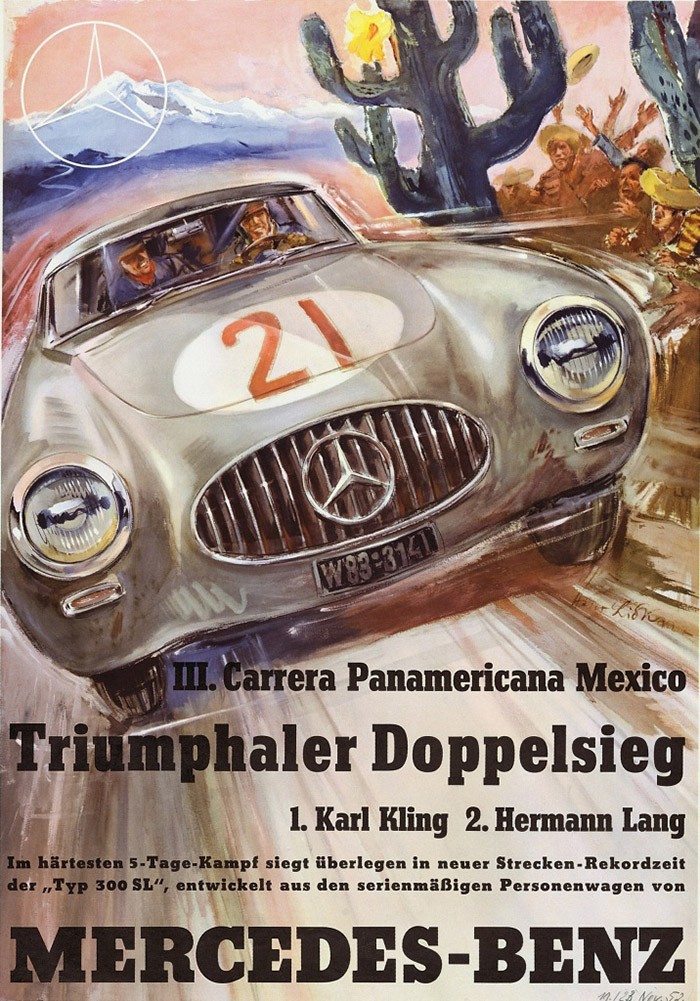
The year 2021 is completely dedicated to the new SL: The performance and sportscar brand Mercedes-AMG is applying its comprehensive expertise to developing the R 232 model series, which will debut in the year of the 69th birthday of the very first SL.
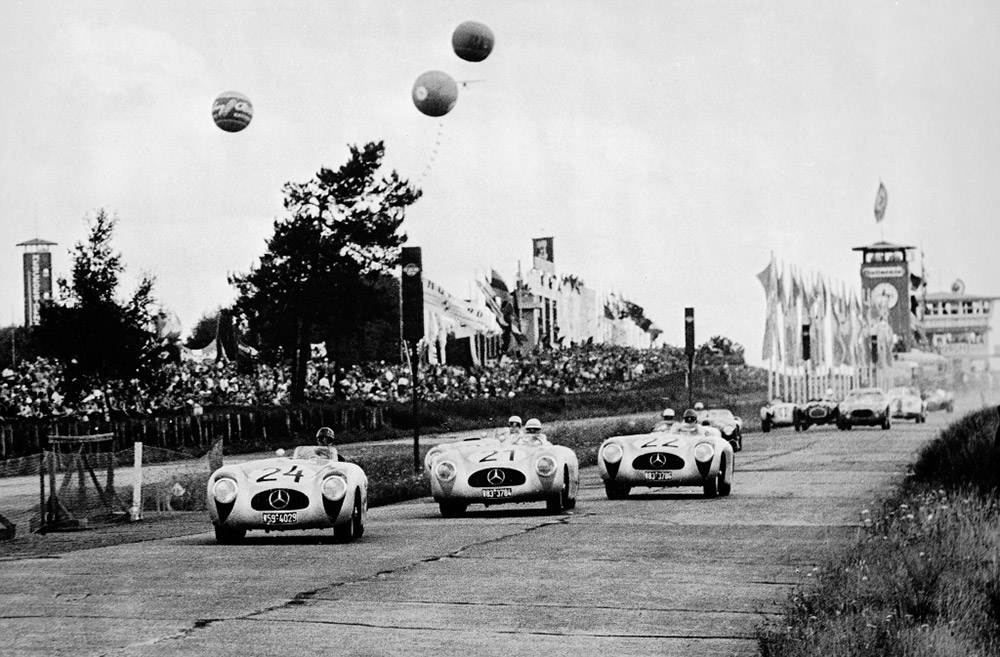
After the successful 300 SL racing sports car (W 194), three iconic production vehicles filled customers all over the world with enthusiasm: they were the 300 SL Coupé of the W 198 model series (1954 to 1957), the open 190 SL sports car of the W 121 model series (1955 to 1963) and the 300 SL Roadster of the W 198 model series (1957 to 1963). Together, these sports cars defined many of the key characteristics of future SL generations. As their joint successor, the 230 SL of the W 113 model series with the safety body designed by Béla Barényi debuted in March 1963. Due to the unusual shape of the hardtop, the sports car was quickly nicknamed the “Pagoda”. The R 107 was then built for 18 successful years from 1971 onwards. At the same time, the roadster formed the basis for the luxurious SLC Coupés in the C 107 model series. The R 129 appeared in 1989 as a pioneering technology car. Its successor, the R 230, introduced the folding Vario roof in 2001, combining the automotive pleasures of travelling in a roadster and a coupé. The consistently applied lightweight design, amongst other features, aroused considerable enthusiasm from 2012 onwards, when the model series R 231 Mercedes-Benz SL debuted. The new SL in the R 232 model series will premiere in 2021 and will lead the SL legend into the future.
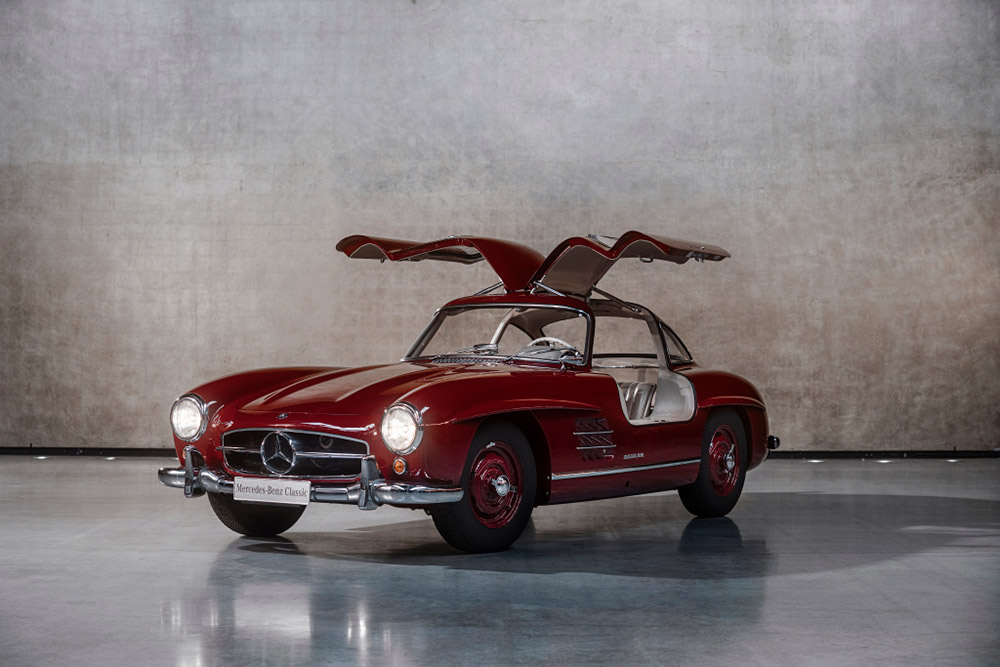
Mercedes-Benz 300 SL Coupé from the W 198 model series (1954 to 1957)
What a launch: In February 1954, the 300 SL standard-production sports car (W 198) celebrated its world premiere at the International Motor Sport Show in New York. Next to it at the show was the near-production level prototype of the future 190 SL Roadster (W 121). Both cars underlined the direct tradition of standard-production sports cars with the race-proven SL abbreviation. Maximilian E. Hoffman, importer of Mercedes-Benz cars for the US market, dedicated considerable effort to encouraging their production.
As a coupé, the 300 SL with its characteristic gullwing doors thrilled experts and the public alike. Not only the shape was reminiscent of the racing sports car, but such technical details as the roll cage also originated from the successful competition car. This makes the 300 SL unique amongst the standard-production sports cars of the era. The doors that were hinged on the roof, which was a necessary feature of the design, earned it such nicknames as “Gullwing” and “Papillon” (butterfly).
The M 198 engine with direct petrol injection was originally developed for the 1953 racing prototype. In the standard-production sports car, the straight six-cylinder engine produced up to 158 kW (215 hp), which gave the car a top speed of 260 km/h, depending on the rear axle ratio. That was an impressive figure for a road-going sports car of the time. This was underlined by the successes of the 300 SL in races and rallies with numerous victories as well as championship titles.
The 300 SL was a super sports car of its time – which was also reflected in the price of DM 29,000. By way of comparison, a Mercedes-Benz 220 (W 180), a predecessor of today’s S-Class, could be had for around DM 12,500 at that time. The 300 SL became an iconic car of the 1950s with an appeal that remains unbroken to this day: in 1999 it was voted “Sports Car of the Century” by an international jury of experts. Between 1954 and 1957, a total of 1,400 of the 300 SL Coupés were built. Of these, 29 had an aluminium body, and one individual model was fitted with a body made of GRP (glass-fibre reinforced plastic), a new material at the time, for testing purposes.
Mercedes-Benz 190 SL of the W 121 model series (1955 to 1963)
The Mercedes-Benz 190 SL was designed as an elegant, open sports car. In 1954, the Stuttgart-based brand presented it together with the 300 SL at the International Motor Sports Show in New York. “Due to its high standard of comfort, [it is] intended for a group of buyers wishing to cover even long distances at high cruising speeds in this car of highly sporty outer appearance.” This was how Mercedes-Benz designer Josef Müller summed it up in 1957.
The body design of the 190 SL was closely based on the Gullwing, but designed as a two-seater roadster. It was available with a fabric top and with a removable hardtop – optionally with or without a fabric top. On request, a third seat could be accommodated in the rear at right angles to the direction of travel. The 190 SL was assigned to the W 121 model series, like the Mercedes-Benz 190 “Ponton” saloon, which appeared later in 1956. The 190 SL was technically closely related to the W 120/W 121 “Ponton” model series. The – shortened – floor assembly, the front suspension and the subframe concept were carried over from the saloon. From the 1956 Mercedes-Benz 190 onwards, the saloon and the 190 SL shared the single-joint swing axle with a low pivot point.
he 1.9-litre petrol engine of the sports car had been completely redesigned by Mercedes-Benz. The four-cylinder unit with an overhead camshaft produced 77 kW (105 hp) in the 190 SL and accelerated the car from 0 to 100 km/h in 14.5 seconds in the version with the fabric roof and its top speed was 170 km/h. During its production period from 1955 to 1963, the details of the 190 SL were improved several times. Over that period, the Sindelfingen plant produced a total of 25,881 cars.
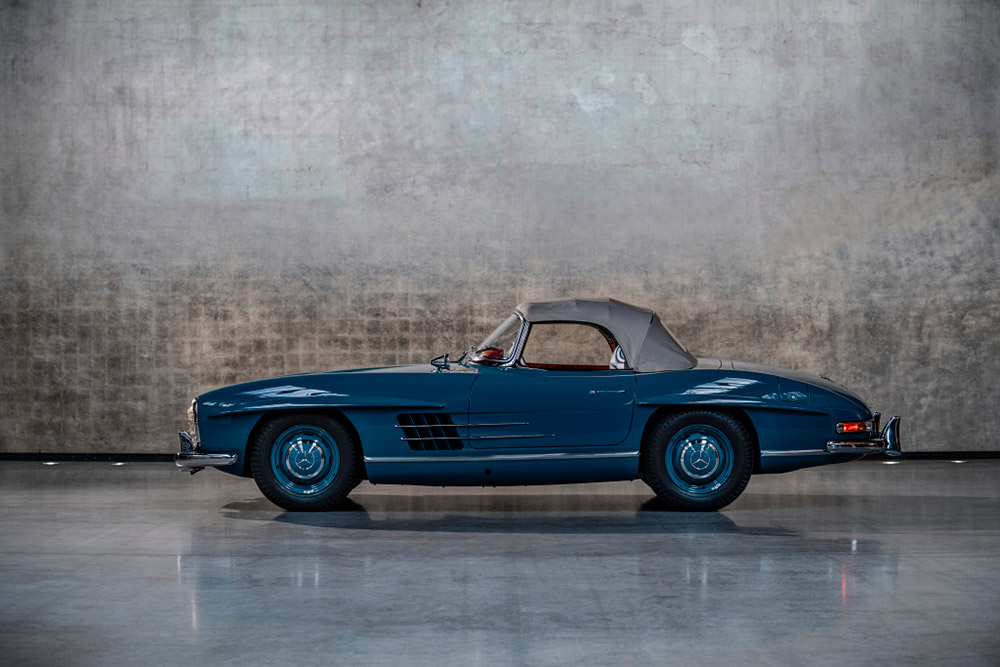
Mercedes-Benz 300 SL Roadster of the W 198 model series (1957 to 1963)
In 1957, the 300 SL Roadster replaced the “Gullwing” coupé. Like its predecessor, this car was created on the initiative of Maximilian E. Hoffmann. Technically, the roadster corresponded to a large extent to the coupé; by modifying the side sections of the roll cage, it was possible to reduce the sill height to such an extent that normal doors could be used.
The rear suspension was fundamentally improved compared to the coupé: the single-joint swing axle with its low pivot point introduced in the “Ponton” six-cylinder models of the W 180 model series in 1954 was now also fitted in an adapted form in the 300 SL Roadster and, for the first time, was equipped with a compensating spring. Seat belts were available as optional equipment from 1957 onwards. Starting in October 1958, a removable coupé roof with a wrap-around rear window was available as optional equipment. The sports car’s details continued to be enhanced throughout the production period. Amongst other things, it was fitted with Dunlop disc brakes on the front and rear wheels from March 1961 and an alloy engine block from March 1962.
Production of the 300 SL Roadster in Sindelfingen ceased at the same time as construction of the 190 SL on 8 February 1963. A total of 1,858 of these open sports cars were built. Both versions of the W 198 model series, the roadster and the gullwing coupé, were collectors’ cars from the very beginning. Today, they are amongst the most sought-after and highest-priced classics.
Mercedes-Benz SL of the W 113 model series (1963 to 1971)
Mercedes-Benz unveiled the new 230 SL (W 113) at the 1963 Geneva Motor Show. It was designed as a comfortable, high-performance two-seater touring car and replaced the 190 SL (W 121) and 300 SL Roadster (W 198). The exterior featured clean, straight lines and the SL front with the large central Mercedes star. The optional hardtop with its high windows and the concave shaped roof supported by narrow pillars was reminiscent of Asian temple buildings, which quickly earned the W 113 the nickname “Pagoda”. The basis of the floor assembly were the Mercedes-Benz “tail fin” saloons of the 111 model series, the world’s first passenger cars with a safety body. This SL generation also benefited from corresponding contemporary research.
The chassis, taken from the Mercedes-Benz 220 SE Saloon, was tuned to the needs of sports-orientated cars. Its suspension was firm and, at the same time, atypically comfortable for a sports car of its time. The six-cylinder engine was also taken from the saloon, but modified for use in the SL. The engine, bored out to 2.3 litres, produced 110 kW (150 hp) and was a sporty power pack.
In 1967, the Mercedes-Benz 250 SL replaced the 230 SL. The changes were mainly to be found in the engine and brake system. The larger-displacement engine offered ten per cent more torque, making the 250 SL much more flexible to drive. In addition to the three familiar body versions (roadster with a folding top, coupé with a removable roof and coupé with removable roof and roadster top), the 250 SL was also available as a 2+2 coupé with a rear seat bench on request. Less than a year after its presentation, the 250 SL was replaced by the Mercedes-Benz 280 SL with a 2.8-litre engine and 125 kW (170 hp) output. From 1963 to 1971, a total of 48,912 “Pagoda” SLs of the W 113 model series were built.
Mercedes-Benz SL from the R 107 model series (1971 to 1989)
The SL of the R 107 model series premiered in spring 1971, starting with the 350 SL. For the first time in the history of the Mercedes-Benz SL, the car was powered by an eight-cylinder engine. The 450 SL followed in 1973. The model series exuded elegance and solidity. The crash performance of this open-top two-seater car was way ahead of its time. From a technical point of view, for example, this was reflected in the carefully defined crumple behaviour of the body and bodyshell structure, as well as an interior that was consistently designed to accommodate safety criteria.
In its very successful 18-year production period, the R 107 model series received a wide range of six- and eight-cylinder engines. The model designations are equally diverse. In July 1974, the 280 SL was launched. This meant that there was a choice of three engines for the sports car. Today, that amount of choice is not unusual, but at the time it represented a novelty in the tradition of the Mercedes-Benz SL cars. Until the end of production in August 1989, all the engine variants were revised with slightly modified performance figures in order to comply more closely with the emission limits that had meanwhile been made more stringent in most European countries.
With more than 18 years of production, the R 107 model series set an internal brand record that is unlikely to be surpassed: apart from the G-Class SUVs, no passenger car model series in the entire history of the company has been produced over such a long period. A total of 237,287 open sports cars were built in Sindelfingen during this period. This figure underlines the tremendous popularity of the model series. Alongside the open-top SLs, the corresponding SLC luxury class coupés of the C 107 model series were produced: from 1971 to 1981, a total of 62,888 of these were built.
Mercedes-Benz SL from the R 129 model series (1989 to 2001)
At the Geneva Motor Show in 1989 Mercedes-Benz presented the SL from the R 129 model series. The confidently stylish, straightforward lines of the slightly wedge-shaped body, the flared wheel arches, the split front spoiler, a very steeply raked windscreen, the skilfully modelled rear and alloy wheels as standard equipment made for an exceptionally harmonious overall effect. With this vehicle the brand hit the bull’s eye: production capacity was soon fully booked. Some customers accepted delivery times of several years.
The car set new standards in safety. This was underlined by rigorous Mercedes-Benz crash tests with very good results in frontal and rear impacts at the time. Other integral components of the safety concept were the pop-up roll-over bar, which deployed within a few milliseconds under sensor control in the event of an imminent roll-over, and the integral seats, which could absorb many times the possible forces in the event of a crash. The chassis was tuned to the requirements of an elegant-but-sporty roadster and enabled precise, high-speed driving with a high level of comfort. In autumn 1992, the 600 SL with a twelve-cylinder engine (290 kW/394 hp) took over the top-of-the-range position.
In the summer of 1993, the Stuttgart brand adapted the model designations of its open sports cars to use the nomenclature that is still valid today. Since then, the legendary abbreviation “SL” has preceded the three-digit number that refers to the engine capacity. For example, the 600 SL became the SL 600.
The facelift in autumn 1995 brought a slightly changed body design, a more extensive set of standard equipment and with finer details in its sophisticated technology. A second facelift in 1998 added subtle stylistic touches for an even more dynamic look. It also brought a modified engine range with new six-cylinder V-engines, instead of the previous in-line engines, and with a new V8 engine. The absolute top model of the model series was the SL 73 AMG with 7.3-litre V12 engine and 386 kW (525 hp) which was presented in 1999.
In the summer of 2001, production of the R 129 model series ended after twelve years and a total of 204,940 cars. This meant that the total number of units of this SL generation was lower than that of the predecessor model series R 107. However, in terms of its average annual production, the R 129 was much more successful, with around 16,500 units.
Mercedes-Benz SL from model series R 230 (2001 to 2012)
In 2001, the next SL generation with the internal code R 230 made its debut. Its most striking innovation was the steel folding Vario roof: for the first time in the history of the Mercedes-Benz SL, it enabled both an open car and a coupé in one. The transformation took place within 16 seconds. The design of the R 230 model series combined tradition and the future by means of striking details. For example, the marked air vents in the front wings picked up on a typical feature of the legendary 300 SL from the 1950s. The narrow, ridge-like profiles on these side air openings were also reminiscent of the fins of the legendary W 198. Top models were the SL 55 AMG (350 kW/476 hp, 2001), SL 600 (368 kW/500 hp, 2003) and the SL 65 AMG (450 kW/612 hp, 2004).
Since the “Pagoda” at the very latest, the Mercedes-Benz SL has stood for pioneering achievements in the fields of active and passive safety in open sports cars. With its completely new overall concept, the R 230 model series clearly surpassed previous safety standards. This included electronic vehicle dynamics systems such as Active Body Control ABC, Brake Assist BAS, anti-slip control ASR and the Electronic Stability Program ESP®, as well as structural safety aspects of the body in many different accident scenarios. Occupant protection also included two-stage airbags for driver and front passenger, head-thorax bags in the doors, integral seats, high-performance belt tensioners, belt force limiters and the sensor-controlled roll-over bar, which also functioned when the folding Vario roof was closed.
The 2006 facelift brought, amongst other things, new engines with four-valve technology and reduced fuel consumption coupled with higher performance. The 7G-TRONIC seven-speed automatic transmission became standard equipment, with the exception of the AMG models. The most striking feature of another facelift in 2008 was the redesigned car front, which brought the SL into line with the brand’s passenger car design current at the time. In the upper performance range, the SL 63 AMG with a new 6.2-litre naturally aspirated AMG engine (386 kW/525 hp) and the exclusive SL 65 AMG Black Series (493 kW/670 hp) with a fixed coupé roof rounded off the model range in 2008.
From 2001 to 2012, a total of 169,433 sports cars of model series R 230 were built at the Mercedes-Benz plant in Bremen. The most successful was the SL 500 with 99,556 production vehicles. The three AMG models also accounted for a large share of the total, with a combined total of 29,570 units.
Mercedes-Benz SL of the R 231 model series (2012 to 2020)
In January 2012, to mark the SL’s 60th birthday, the R 231 model series was unveiled at the North American International Auto Show (NAIAS) in Detroit. One focus of the new design was on reducing the weight of the sports car. The aluminium bodyshell weighed 256 kilograms. Despite its more voluminous size, it was 110 kilograms lighter than its predecessor and featured 20 per cent greater torsional rigidity. The boot lid was a composite construction of steel and plastic, the elements of the electrohydraulically folding roof consisted of a magnesium frame with plastic panelling. The roof, painted in the colour of the vehicle as a standard feature, was available on request with a transparent centre section and roller blind (standard equipment from 2016) or as a glass roof with adjustable tinting and transparency (MAGIC SKY CONTROL).
The R 231’s safety features included spring-loaded roll-over bars behind the driver and front passenger seats, airbags and sidebags for the driver and front passenger as well as head airbags in the doors, the MAGIC VISION CONTROL adaptive windscreen washer system and also an active bonnet to protect pedestrians in the event of a collision. Dynamic safety features included ESP®, PRE-SAFE®, ADAPTIVE BRAKE and ATTENTION ASSIST. Numerous other systems for active safety and comfort were available on request.
The SL 350 (V6 engine with 225 kW/306 hp) and SL 500 (V8 engine with 320 kW/435 hp) sports cars, which were the first models launched, were followed as of March 2012 by the high-performance variants SL 63 AMG (395 kW/537 hp) and SL 65 AMG (V12 engine with 463 kW (630 hp). Only automatic transmissions with seven or nine gears (9G-TRONIC from April 2016 onwards) were used. In the course of the construction period, the engine and model designations, as well as interior touches, of the sporty-luxurious R 231 were updated. The new SL in the R 232 model series is scheduled to make its debut in 2021.


